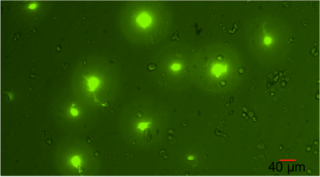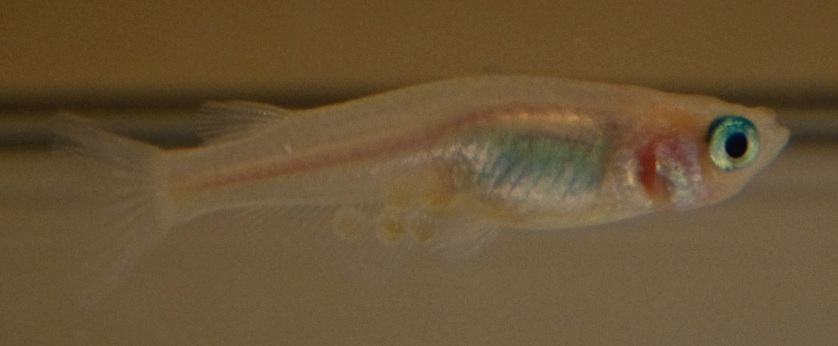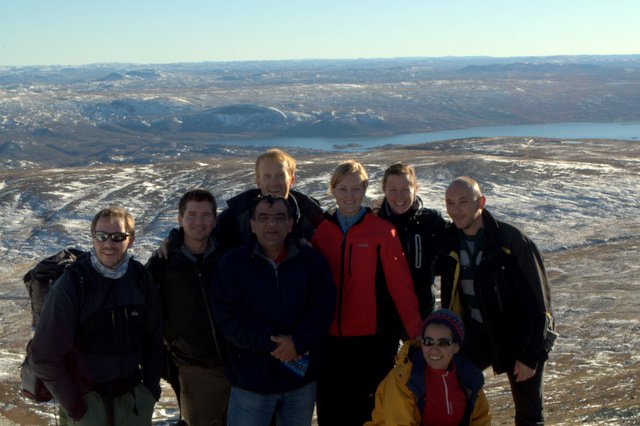Neuroendocrinology of Reproduction in Fish
Department of Basic Sciences and Aquatic Medicine
Norwegian School of Veterinary Science
Contact
Finn-Arne Weltzien
finn-arne.weltzien@nvh.no
Phone: +47 950 960 15
Address
Norwegian School of Veterinary Science
Department of Basic Sciences and Aquatic Medicine
PO Box 8146 Dep
0033 Oslo (Norway)
Group description
The research group Neuroendocrinology of Reproduction in Fish is based at two institutions, the Norwegian School of Veterinary Science, and the University of Oslo. The group currently consists of two joint group leaders (Trude M. Haug and Finn-Arne Weltzien), 1 engineer, 4 PhD students, and 1 MSc student.
The group leaders teach several subjects in physiology at different levels for students in biology, veterinary medicine, and veterinary nursing; bachelor, MSc, and Phd-level courses.
Main lines of research
Our research focuses on fundamental aspects of neuroendocrine regulation of puberty in fish. Using Atlantic cod, European eel, and medaka as model systems, we are interested in the differential regulation of FSH- and LH-producing gonadotropes including their intracellular signaling pathways, how brain GnRH systems act to stimulate the pituitary gonadotropes, and how components of the HPG axis function during development. In this work, we are using different methodological approaches combining molecular biology and electrophysiology. For instance, we are studying the response of individual pituitary cells in culture to e.g. GnRH by employing a combination of patch-clamp electrophysiology, Ca2+ microfluorometry and imaging, and single-cell qPCR.
Links
Group website: www.weltzienlab.com
University website: www.nvh.no
Relevant publications
1. Aroua S, Maugars G, Jeng SR, Chang CF, Weltzien F-A, Rousseau K, Dufour S (2012a). Pituitary gonadotropins FSH and LH are oppositely regulated by the activin/follistatin system in a basal teleost, the eel. Gen. Comp. Endocrinol. 175, 82-91.
2. Henkel CV, Burgerhout E, de Wijze DL, Dirks RP, Minegishi Y, Jansen HJ, Spaink HP, Dufour S, Weltzien F-A, Tsukamoto K, van den Thillart GE (2012b). Primitive duplicate Hox clusters in the European eel’s genome. PLoS One 7(2), e32231.
3. Hodne K, von Krogh K, Weltzien F-A, Sand O, Haug TM (2012c). Optimized conditions for primary culture of pituitary cells from the Atlantic cod (Gadus morhua). The importance of osmolality, pCO2, and pH. Gen. Comp. Endocrinol. 178, 206-215.
4. Mazzeo I, Peñaranda DS, Gallego V, Hildahl J, Nourizadeh-Lillabadi R, Asturiano JF, Pérez L, Weltzien F-A (2012d). Variations in the gene expression of zona pellucida proteins, zpb and zpc, in female European eel (Anguilla anguilla) during induced sexual maturation. Gen. Comp. Endocrinol. 178, 338-346.
5. Hildahl J, Sandvik GK, Lifjeld R, Hodne K, Nagahama Y, Haug TM, Okubo K, Weltzien F-A (2012e). Developmental tracing of luteinizing hormone β-subunit gene expression using green fluorescent protein transgenic medaka (Oryzias latipes) reveals a putative novel developmental function. Dev. Dyn. 241, 1665-1677.
6. Henkel CV, Dirks RP, de Wijze DL, Minegishi Y, Aoyama J, Jansen HJ, Turner B, Knudsen B, Bundgaard M, Hvam KL, Boetzer M, Pirovano W, Weltzien F-A, Dufour S, Tsukamoto K, Spaink HP, van den Thillart GE (2012f). First draft genome of the Japanese eel, Anguilla japonica, constructed via a versatile de novo assembly pipeline. Gene 511, 195-201.
7. Hildahl J, Taranger GL, Norberg B, Haug TM, Weltzien F-A (2013a). Differential regulation of GnRH ligand and receptor genes in the brain and pituitary of Atlantic cod exposed to different photoperiod. Gen. Comp. Endocrinol. 180, 7-14.
8. Peñaranda DS, Mazzeo I, Hildahl J, Gallego V, Nourizadeh-Lillabadi R, Pérez L, Asturiano JF, Weltzien F-A (2013b). Molecular characterization of three GnRH receptor paralogs in the European eel, Anguilla anguilla: Tissue-distribution and changes in transcript abundance during artificially induced sexual development. Mol. Cell. Endocrinol. 369, 1-14.
9. Strandabø RAU, Hodne K, Ager-Wick E, Sand O, Weltzien F-A, Haug TM (2013c). Signal transduction involved in GnRH2-stimulation of identified LH-producing gonadotropes from lhb-GFP transgenic medaka (Oryzias latipes). Mol. Cell. Endocrinol. 372, 128-139.
10. Hodne K, Strandabø RAU, von Krogh K, Nourizadeh-Lillabadi R, Sand O, Weltzien F-A, Haug TM (2013d). Electrophysiological differences between fshb- and lhb-expressing gonadotropes in primary culture. Endocrinology 154, 3319-3330.
11. Hodne K, Weltzien F-A, Oka Y, Okubo K (2013e). Expression and putative function of kisspeptins and their receptors during early development in medaka. Endocrinology 154, 3437-3446.
12. Weltzien F-A, Hildahl J, Hodne K, Okubo K, Haug TM (2013f). Embryonic development of gonadotropins and gonadotrope cells –lessons from model fish. Invited review to special issue in Mol. Cell. Endocrinol. (in press).
13. Ager-Wick E, Dirks RP, Burgerhout E, Nourizadeh-Lillabadi R, de Wijze DL, Spaink HP, van den Thillart GEEJM, Tsukamoto K, Dufour S, Weltzien F-A, Henkel CV (2013g). The pituitary gland of European eel reveals massive expression of genes involved in the melanocortin system. PlosOne (in press).



